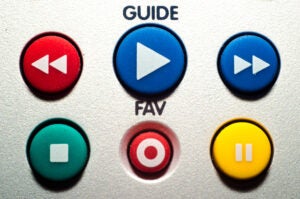NBCUniversal’s Denise Colella will speak at AdExchanger’s upcoming PROGRAMMATIC I/O New York conference on Oct. 15 and 16.
People watching a TV show shouldn’t see ads they don’t care about.
Transforming the TV ad experience to incorporate more targeting is a key mission of Denise Colella, SVP of advanced advertising products and strategy at NBCUniversal.
“There is no excuse. No one should have to watch a program and see an ad that’s completely irrelevant,” Colella said.
Back-to-school shoppers should see ads for Macy’s and Old Navy, and car buyers shouldn’t see a pickup truck if they’re looking for a luxury sedan. That customized experience should happen across every type of TV watching, from linear to streaming.
To enable that level of targeting precision, NBCUniversal needs a large, unified pool of inventory that it can slice and dice into smaller pieces. Its acquisition of Sky and a bigger partnership with Comcast make that goal more attainable.
Sky already developed an advanced addressable TV business in the United Kingdom, so it’s sharing its perspective as NBCUniversal tests linear addressable ads in Comcast households. And NBCUniversal and Sky are going to market together, offering global advertisers an easier way to buy on both sides of the pond.
Colella discussed NBCUniversal’s ambitions, the rise of streaming platforms and how consolidation will unlock more targeting opportunities for advertisers.
AdExchanger: What does the consolidation in TV mean for the advertising industry, looking at deals like NBCUniversal and Sky or CBS and Viacom?
DENISE COLELLA: At a macro level, scale has, in some cases, been difficult to come by. There is no reason buyers should have to go to 20 cable providers to buy their advertisements. Scale is important when you are doing targeting, because sometimes you can narrow down an audience too much. Greater scale should mean creating your target audience is easier. It should also mean buyers have an easier time buying commercial space for campaigns.
NBCUniversal is learning from what Sky’s done in addressable. Why is Sky further along?
Sky is the broadcast network and the MVPD, and they aren’t subject to data restrictions like we are in the States. And they can test out ideas in a smaller market. Smaller markets are great for testing, because you get results back more quickly.
Is there a particular targeting product we’ll see more of this coming TV season?
We have been investing in targeting and data products for over four years now. And we really feel like we’ve reached a point of maturity, if you will, where all our AdSmart products are firing on all cylinders, whether it’s optimized linear, which now leverages multiple viewership sets – Comcast, Vizio, Nielsen and Comscore – or testing linear addressable with Comcast or offering programmatic access across display, short-form and long-form.
Right now, data targeting is second nature for us. If you have a campaign and want to get it to the right people, we have multiple ways to get it there. That makes it a far richer environment to get people to their intended audience.
What can be done with advanced TV targeting that many people don’t know about yet?
In linear, we can actually identify what people are watching second-by-second with set-top box data. Even on linear TV, we can identify where the target audience is, when they’re there and which pods they are watching.
What’s different about working with direct-to-consumer brands, which are entering TV en masse?
I consider many of the new brands to be “audience natives.” They came up through audience targeting on digital, and they’re moving to mediums like TV just expecting to audience target. They are folks that already know AdSmart works, and they are just figuring out how they can activate. In some ways, they are a lot faster to the game of audience targeting than traditional buyers.
Where is NBCUniversal in measurement, such as being able to tie TV ad viewing to in-store visits or sales?
We have been addressing this area in our insights and measurement group, working with them closely. Whenever someone is using AdSmart, it should be a complete cycle. We want them to go all the way from campaign generation, target determination, flighting the campaign and measurement, make sure we can hit the KPIs and then go back to the beginning again. Everything you learned through the system should be rehashed to make the next campaign better.
On the digital advertising side, we’re seeing an intensification of focus on privacy. How is that informing your approach and product road map for TV targeting and measurement?
Privacy is of course paramount to us. We are a premium brand. We are taking the learnings we can get from GDPR from Sky. And there are a lot of initiatives going around the company with CCPA. While there is increased attention to privacy because of the law coming out next year, this attention to privacy isn’t something new. It’s been one of our top priorities ever since we launched data operations four years ago.
Consumers have multiple access points to NBCUniversal media – live, DVR, on demand and streaming platforms where they can access content. Where is that fragmentation a challenge?
Every client in the market is dealing with deduplication issues. Whenever you are dealing with cross-channel media, you are dealing with different systems of target generation and measurement. CFlight is our step toward making measurement equivalent, but the truth is TV still delivers separately from digital, and addressable delivers separate from TV. That presents challenges as we optimize platforms and move toward total delivery measurement.
What’s the biggest problem that you see buyers facing?
One problem we all have in market today is matching. Whenever we have data, we have to figure out where it’s from, how it was collected and the match rates. The fact is, everything is targetable, but to get from target determination to flighting [the campaign], there is often a lot of sausage-making behind the scenes that can get time-consuming.
This interview has been edited and condensed.














